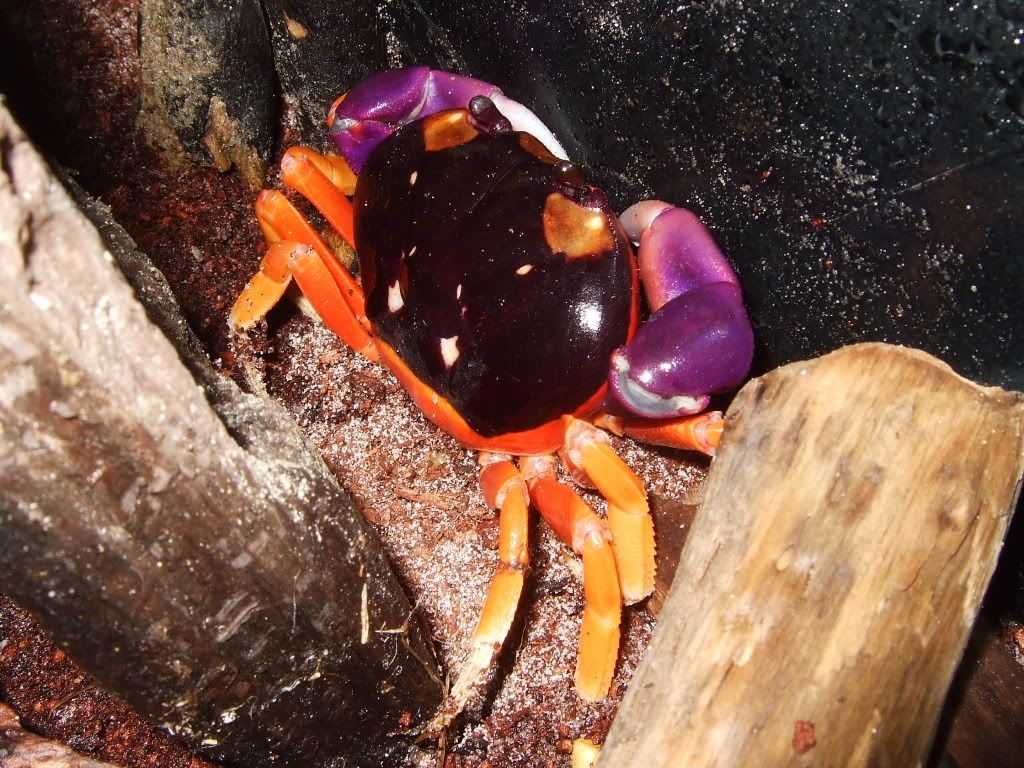- Joined
- Oct 30, 2010
- Messages
- 2,410
My dad and I went to the LI expo on 3/27 and he saw some nice moon crabs and we were fascinated by them. We had seen them at petsmart before but the ones at the expo were big and healthy looking. He bought one and has it in a 10 gallon with moistened cypress and a regular bulb over it with a small humid hide as well. Anyone have experience with them? What should it be fed? The vendor said "anything" from cereal to cat and dog food. We've had plenty of hermit crabs before but this is the first moon crab. Online info is limited as I researched them, and I'm not too trusting of it...
